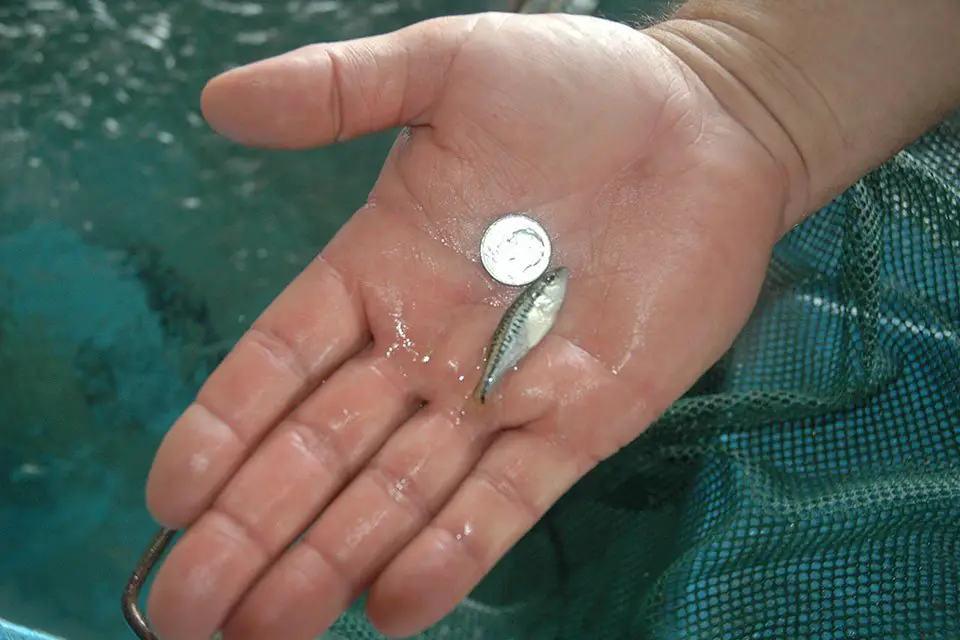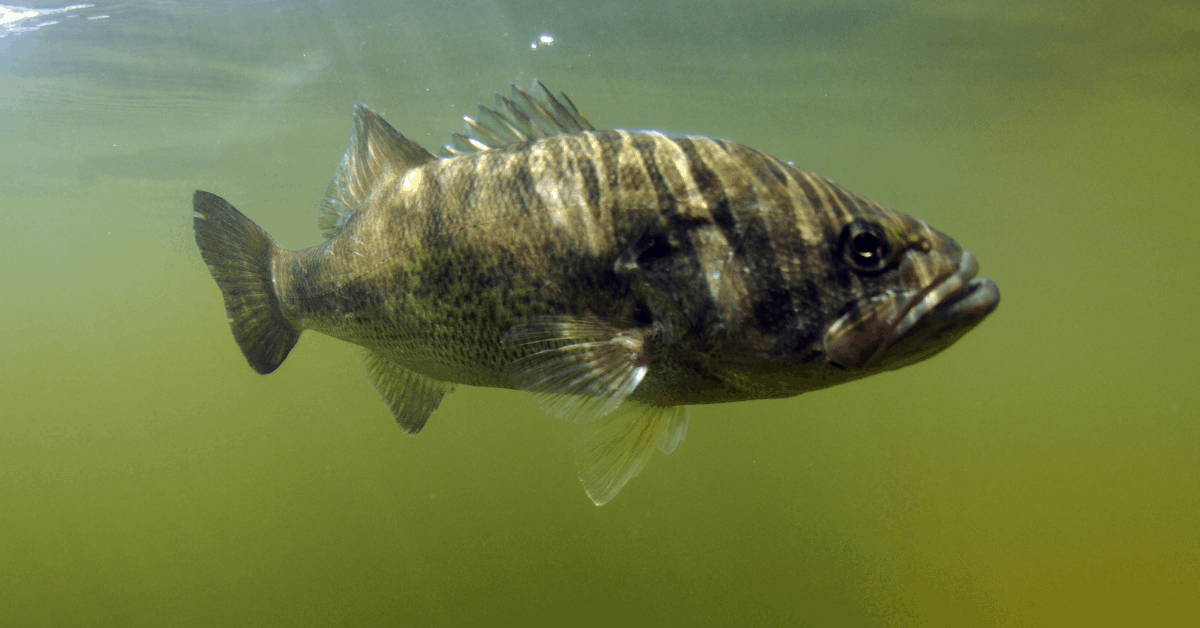Have you ever wondered how long a largemouth bass can live? Well, you’re in luck! In this article, we will explore the lifespan of the largemouth bass, one of the most popular freshwater game fish. From their feeding habits to various environmental factors, we’ll unravel the secrets behind their longevity. Prepare to be amazed as we delve into the fascinating world of the largemouth bass and discover just how long they can thrive in their aquatic havens.
Physical Characteristics of Largemouth Bass
Largemouth bass, scientifically known as Micropterus salmoides, are well known for their impressive size and striking appearance. They are one of the largest species in the sunfish family and can grow to exceptional lengths. The average weight of an adult largemouth bass ranges from 1 to 10 pounds, with some individuals reaching weights of over 20 pounds. The largest recorded largemouth bass weighed a whopping 22 pounds and 4 ounces!
In addition to their size, largemouth bass also display a stunning range of colors. Their bodies are typically olive-green, with dark blotches along their sides that resemble a series of bars. These bars can vary in intensity, ranging from a dark green to a black coloration. The underside of the largemouth bass is light-colored, often appearing whitish or yellowish. This unique combination of colors helps the bass blend into various aquatic environments, making them effective predators.
One of the most distinctive features of largemouth bass is their large mouth, which gives them their name. Their mouths extend past their eyes and can open wide, allowing them to engulf prey that is nearly half their own length. This impressive mouth size is a key adaptation for their carnivorous feeding behavior.
Habitat and Distribution
Largemouth bass are predominantly found in freshwater habitats, and they thrive in a variety of aquatic environments. You can often find them in lakes, ponds, rivers, and reservoirs with ample vegetation and submerged structures like fallen trees or rocks. These features provide the bass with shelter and ambush opportunities, allowing them to wait for unsuspecting prey.
When it comes to water conditions, largemouth bass prefer clear water with moderate temperatures. They are more active in warmer water, usually between 60 to 80 degrees Fahrenheit. Adequate dissolved oxygen levels are also important for their survival. If the water becomes excessively warm, the bass may seek out deeper, cooler waters to avoid heat stress.
Largemouth bass have a wide geographical range and can be found throughout North America, from southern Canada down to Mexico and Central America. They have been introduced to various countries outside of their native range, including Japan, South Africa, and Australia, due to their popularity among anglers.

Feeding Patterns and Diet
Largemouth bass are top-level predators and have a voracious appetite. They are carnivorous and primarily feed on other animals, particularly smaller fish. Their diet mainly consists of prey species such as minnows, shad, sunfish, and crayfish. Largemouth bass are opportunistic feeders and will also consume frogs, insects, and even small mammals or birds if given the chance.
Their feeding behavior is characterized by their predatory nature. Largemouth bass are ambush predators, meaning they lie in wait for their prey and strike with lightning speed and precision. They use their excellent camouflage and patience to hide among vegetation or near structures before launching an ambush. Once within striking range, they open their large mouths and engulf their prey in one swift motion.
Reproduction and Spawning
Mating season for largemouth bass typically occurs during the spring months, when water temperatures begin to rise. As the water reaches around 60 to 65 degrees Fahrenheit, the bass become sexually mature and begin their reproductive process.
Spawning takes place in shallow waters, such as coves or protected areas with aquatic vegetation. The female lays her eggs on the underside of submerged structures like rocks or logs, creating a nest called a “bed.” The male then fertilizes the eggs by releasing his sperm over them. After fertilization, the female carefully guards the nest until the eggs hatch.
The development of the eggs progresses over several days, with the timing influenced by water temperature. Warmer water speeds up the process, while cooler water delays it. Once the eggs hatch, the fry (baby fish) remain in the nest for a short period before venturing out into the surrounding waters.

Factors Influencing Lifespan
The lifespan of largemouth bass can vary depending on several factors, including environmental conditions, availability of food, and the presence of predators and diseases.
Environmental conditions play a crucial role in a bass’s lifespan. Changes in water quality, temperature, and dissolved oxygen levels can have a significant impact on their overall health and survival. Bass are adapted to specific water conditions, and any drastic changes can put stress on their systems, potentially shortening their lifespan.
Availability of food is another important factor. If a bass has a consistent and abundant food source, they are more likely to thrive and live longer. Lack of food or competition for resources can lead to stunted growth and reduced lifespan.
Predation and disease are constant threats to largemouth bass. Predators such as larger fish, birds, and even humans can prey on bass, especially during their vulnerable stages of life. Additionally, diseases and parasites can weaken bass and make them more susceptible to other health problems, ultimately affecting their lifespan.
Average Lifespan of Largemouth Bass
Determining the exact average lifespan of largemouth bass can be challenging due to various factors and individual differences. However, several studies and research efforts have shed light on their longevity.
There have been documented cases of largemouth bass living up to 16 years in the wild. It is important to note that this is not the average lifespan, but rather an exceptional case. In captivity, where bass receive optimal care and conditions, their lifespan can exceed 20 years.
Researchers have used length of captivity as a way to estimate lifespan. In some cases, largemouth bass in well-maintained aquariums have lived into their late teens and early twenties. These extended lifespans demonstrate the potential longevity of largemouth bass under ideal conditions.

Oldest Recorded Largemouth Bass
The oldest recorded largemouth bass to date is commonly known as the Perry Bass. This remarkable specimen was caught in Montgomery Lake, Georgia, in 1932, and weighed an impressive 22 pounds and 4 ounces. It stood as the world record for over eight decades and captivated the imagination of anglers worldwide.
However, the record does face controversy and challenges regarding its verification. The Perry Bass was caught before the era of strict record-keeping protocols, and the details surrounding its capture were never properly documented. As a result, some experts and organizations question the validity of the record. Despite the controversy, the Perry Bass remains an iconic figure among largemouth bass enthusiasts.
Comparison to Other Freshwater Fish Species
When comparing largemouth bass to other freshwater fish species, several factors contribute to their individual lifespan variations. Various species have different life expectancies due to their unique biological traits, habitat requirements, and interactions with their environment.
Factors affecting longevity in freshwater fish include genetic predisposition, growth rates, reproductive strategies, and resistance to diseases or parasites. Some species, like the common carp, can have relatively long lifespans, often reaching over 20 years. On the other hand, small species such as mosquitofish typically have shorter lifespans, usually lasting around one to two years.

Recreational Fishing and Conservation
Largemouth bass have captivated the attention of recreational anglers for centuries. They are a highly sought-after species due to their size, strength, and impressive fighting ability. However, the popularity of bass fishing has also raised concerns about the potential impact on their populations and the need for conservation efforts.
Heavy fishing pressure can affect the bass population’s balance, particularly if it targets larger, reproductive individuals. This can disrupt natural breeding cycles and reduce genetic diversity. Catch and release practices have become increasingly important in the world of bass fishing to maintain sustainable populations. Anglers are encouraged to release larger, breeding-sized bass to ensure the continuation of healthy populations.
Conservation efforts are vital for preserving largemouth bass habitats and populations. These efforts can include preserving wetlands, protecting vegetated areas, and implementing regulations on fishing practices and bag limits. By taking proactive measures, we can ensure the long-term survival of this iconic freshwater species for generations to come.
Frequently Asked Questions (FAQs)
At what age do largemouth bass reach maturity?
Largemouth bass typically reach sexual maturity between two to three years of age. However, this can vary depending on environmental conditions and the availability of food.
What is the typical weight of a mature largemouth bass?
The weight of a mature largemouth bass can vary greatly depending on factors such as location, food availability, and genetics. On average, a mature bass weighs between 1 to 10 pounds, but exceptional individuals can reach weights over 20 pounds.
Can largemouth bass survive in saltwater?
Largemouth bass are strictly freshwater fish and cannot tolerate high salinity levels. They are not capable of surviving in saltwater environments.
How fast do largemouth bass grow?
The growth rate of largemouth bass depends on factors such as food availability, water quality, genetics, and environmental conditions. In the first year of life, a largemouth bass can grow several inches in length. Growth rates tend to slow down as they get older, but under favorable conditions, they can continue to grow in size throughout their lives.
Are largemouth bass native to North America?
Yes, largemouth bass are native to North America. They are primarily found in freshwater environments across the continent, from southern Canada to Mexico and Central America.





